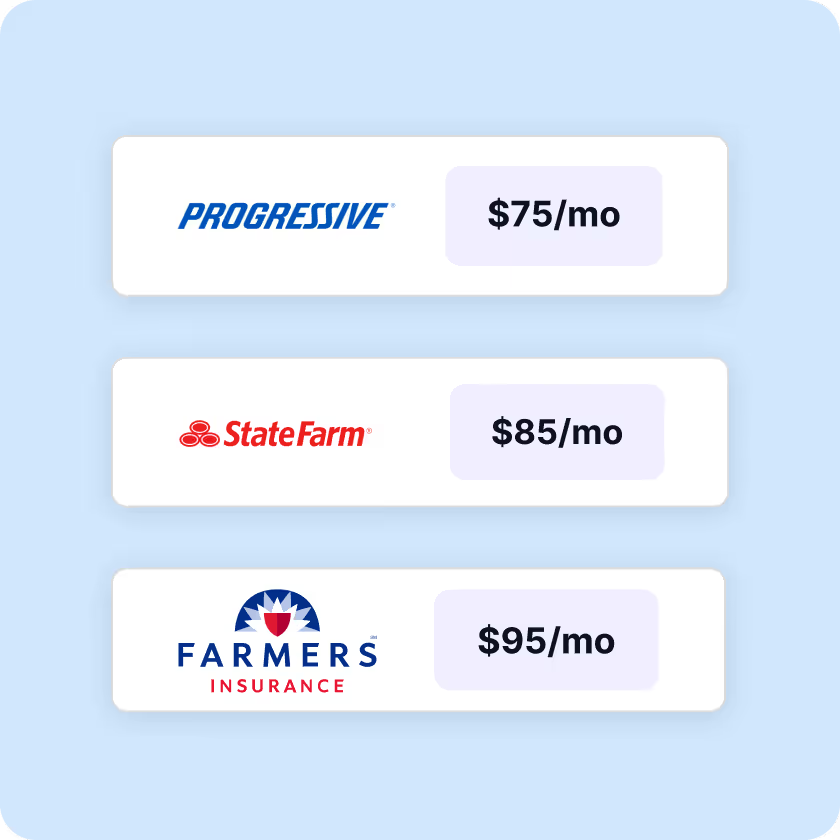
Kudos has partnered with CardRatings and Red Ventures for our coverage of credit card products. Kudos, CardRatings, and Red Ventures may receive a commission from card issuers. Kudos may receive commission from card issuers. Some of the card offers that appear on Kudos are from advertisers and may impact how and where card products appear on the site. Kudos tries to include as many card companies and offers as we are aware of, including offers from issuers that don't pay us, but we may not cover all card companies or all available card offers. You don't have to use our links, but we're grateful when you do!
Credit Card Portfolio Rebalancing: When to Keep, Downgrade, or Cancel Cards (2025 Guide)
July 1, 2025

.webp)
Why Annual Credit Card Portfolio Reviews Matter
Think of your credit card portfolio like an investment portfolio: what worked brilliantly last year might be costing you money today. According to recent industry data, the average American carries 3.9 credit cards, yet many haven't evaluated whether those cards still serve their financial goals.
Smart credit card management isn't about collecting plastic—it's about strategic optimization. Whether you're paying for perks you no longer use, missing out on better rewards categories, or simply holding too many cards with overlapping benefits, an annual portfolio rebalance can save hundreds of dollars while strengthening your credit profile.
The key is knowing when to keep a card in active rotation, when to downgrade to a no-fee alternative, and when canceling makes the most sense.
When to Keep Your Credit Card
Keeping a credit card open—even if you rarely use it—often benefits your credit score more than closing it. Here's when retention makes sense.
You Have Long Account History
Credit history length accounts for 15% of your FICO score. If you've held a card for five years or more, that account adds significant weight to your credit age. Closing it would shorten your average account age and potentially ding your score.
Action: Keep older accounts open, especially if they have no annual fee. Make one small purchase every few months to keep the account active and prevent issuer closures due to inactivity.
The Card Has High Available Credit
Your credit utilization ratio—how much credit you're using versus your total available credit—makes up 30% of your credit score. Closing a card with a substantial credit limit reduces your total available credit, potentially spiking your utilization percentage.
Example: You have three cards with a combined $30,000 limit and currently owe $6,000 total (20% utilization—good). If you close a card with a $10,000 limit, your utilization jumps to 30% ($6,000 ÷ $20,000), which could lower your score.
Annual Fee Provides Clear Value
Premium cards often charge annual fees ranging from $95 to $695. Before reflexively keeping these cards, calculate the actual return on investment:
- Travel credits – Are you actually using that $300 annual travel credit?
- Lounge access – Do you fly enough to justify the Priority Pass membership?
- Category bonuses – Are the enhanced earning rates on dining or travel offsetting the fee?
ROI Formula: (Total annual rewards earned + statement credits used) - Annual fee = Net value
If the net value is positive and you're actively using the benefits, keep the card. Many cardholders find that cards like the Chase Sapphire Reserve® or American Express® Gold Card easily pay for themselves with the right spending patterns.
[[ SINGLE_CARD * {"id": "510", "isExpanded": "false", "bestForCategoryId": "15", "bestForText": "Frequent Travelers", "headerHint": "$300 Annual Travel Credit"} ]]
[[ SINGLE_CARD * {"id": "118", "isExpanded": "false", "bestForCategoryId": "15", "bestForText": "Frequent Travelers", "headerHint": "Generous Travel Rewards"} ]]
It Fills a Strategic Gap
Perhaps you have one card that earns exceptional rewards in a specific category where your other cards fall short—like 5% cash back at U.S. supermarkets or bonus points on streaming services. These niche cards are worth keeping if they complement your broader portfolio strategy.
When to Downgrade Your Credit Card
Downgrading (also called a product change) means switching to a lower-tier card from the same issuer, typically one with reduced or no annual fee. This middle-ground option lets you preserve your credit history while eliminating costs.
The Annual Fee No Longer Justifies the Perks
Life changes. Maybe you're traveling less after having a child, or remote work means you're not dining out as frequently. When your spending habits shift, that premium card's annual fee can quickly become dead weight.
Downgrade candidates:
- Chase Sapphire Reserve → Chase Sapphire Preferred® Card or Chase Freedom
[[ CARD_LIST * {"ids": ["509","1098", "3344"]} ]]
- American Express Gold Card → American Express® Green Card or Blue Cash Everyday® Card from American Express
[[ CARD_LIST * {"ids": ["11105","260"]} ]]
- Capital One Venture X Rewards Credit Card → Capital One Venture Rewards Credit Card or Capital One VentureOne Rewards Credit Card
[[ CARD_LIST * {"ids": ["2888","438", "440"]} ]]
Most issuers allow downgrades after you've held the card for at least 12 months. When you downgrade, you typically keep the same account number, credit limit, and account age—all positive factors for your credit score. However, you won't receive a welcome offer for the new card.
You Want to Avoid a Hard Inquiry
Unlike applying for a new card, downgrading doesn't require a hard credit pull. This makes it ideal if you're planning a major credit application soon (like a mortgage) and want to avoid the temporary score dip from multiple inquiries.
Your Rewards Will Transfer Seamlessly
One concern with downgrading: what happens to your points? Good news—most major issuers allow you to keep your rewards when downgrading within the same rewards ecosystem:
- Chase Ultimate Rewards – Points remain intact when downgrading between Chase Sapphire or Freedom cards
- American Express Membership Rewards – Keep your points when moving to another Membership Rewards-earning card
- Capital One miles – Transfer seamlessly across Venture products
Always confirm with your issuer before downgrading to avoid surprises. In rare cases, you may need to redeem rewards before the product change.
There's a Suitable No-Fee Alternative
Not all cards have downgrade paths. Before calling your issuer, research which cards they might offer for a product change. Chase, Amex, Capital One, and Citi generally have flexible downgrade options within their card families. Smaller issuers or co-branded airline cards may have limited alternatives.
Pro tip: When you call to downgrade, representatives may offer retention bonuses (statement credits or bonus points) to convince you to keep your current card. It never hurts to ask what they can do before you commit to downgrading.
When to Cancel Your Credit Card
Cancellation should be your last resort, but there are valid scenarios where closing an account makes sense.
No Downgrade Option Exists
Some cards simply can't be downgraded—particularly store cards, certain co-branded products, or cards from issuers with limited portfolios. If you're stuck paying an annual fee with no alternative product, cancellation may be your only option.
Important: Before canceling, contact the issuer's retention line. Issuers may offer unpublished retention offers such as statement credits, bonus points, or fee waivers that could make keeping the card worthwhile.
The Card Encourages Overspending
If a particular card tempts you into debt or enables bad spending habits, the credit score preservation isn't worth the financial damage. Some people find that high credit limits create a false sense of available funds, leading to revolving balances and interest charges that far outweigh any rewards earned.
In these cases, your financial wellbeing trumps credit optimization.
You're Reducing Overall Credit Exposure
Perhaps you're simplifying your financial life, preparing for a big purchase, or concerned about fraud risk across multiple accounts. While not common, these are legitimate reasons to pare down your credit card collection.
You Have Robust Credit Elsewhere
If you have five other credit cards with strong limits and long histories, closing one won't devastate your credit score. The impact depends on:
- How much available credit you're losing
- Whether it's one of your oldest accounts
- Your current utilization rate
Cardholders with extensive credit profiles can absorb the hit more easily than those with limited credit histories.
The Annual Credit Card Portfolio Review: A Step-by-Step Process
Treat credit card management like an annual financial checkup. Here's a systematic approach to evaluate your wallet each year.
Step 1: List Every Card and Its Annual Fee
Create a simple spreadsheet with columns for:
- Card name
- Annual fee
- Date account was opened (for age tracking)
- Current credit limit
- Primary use case (e.g., "travel," "groceries," "backup card")
This inventory gives you a clear picture of what you're working with and how much you're paying in total annual fees.
Step 2: Calculate Your Actual Earnings Per Card
For each card, add up:
- Cash back or points earned in the past 12 months
- Statement credits you actually used (travel credits, dining credits, etc.)
- Any welcome offer value you captured this year
Then subtract:
- The annual fee
- Any fees you paid (foreign transaction fees, late fees, etc.)
This reveals which cards are actually profitable and which are costing you money.
Step 3: Identify Overlapping Benefits
Do you have three cards that all offer airport lounge access? Two cards with nearly identical cash back structures? Consolidation opportunities often hide in plain sight.
Example scenario: You hold both the Chase Sapphire Preferred (earns 2X on travel) and the Capital One Venture (earns 2X on everything). These cards largely overlap in function. You might keep one and downgrade the other to eliminate redundancy.
Step 4: Assess Life Changes
Major life events should trigger portfolio adjustments:
- New baby – You might prioritize grocery and drugstore rewards over travel perks
- Job change – Business cards may become less relevant; commuting expenses might decrease
- Buying a home – Home improvement and furniture spending categories become valuable
- Retirement – Fixed income may mean lower overall spending; annual fees become harder to justify
Your credit card portfolio should evolve with your life, not remain frozen in time.
Step 5: Make Your Decision for Each Card
Using the framework above, classify each card:
- Keep – Strong ROI, irreplaceable benefits, or critical for credit profile
- Downgrade – Not worth the fee but want to preserve account history
- Cancel – No downgrade option, harmful to spending habits, or redundant with robust credit elsewhere
For cards in the "downgrade" category, call your issuer and explicitly request a product change. For "cancel" cards, make the call only after carefully considering the credit impact.
Common Portfolio Rebalancing Mistakes to Avoid
Even experienced cardholders make these errors when optimizing their wallets.
Mistake 1: Canceling Your Oldest Card
This is the classic blunder. Your first credit card—even if it's a basic student card with minimal rewards—holds significant value for your credit history. Unless it has an annual fee you absolutely can't afford, keep your oldest account open.
Better approach: Make one small recurring charge on it (like a streaming subscription) and set up autopay so you never forget about it.
Mistake 2: Chasing Welcome Offers Through Constant Churning
Opening and closing cards rapidly to collect welcome bonuses might seem lucrative, but it can backfire. Many issuers have anti-churning rules, like Chase's 5/24 rule or American Express's once-per-lifetime bonus restriction. Excessive applications also temporarily damage your credit score through hard inquiries.
Sustainable credit card optimization focuses on long-term value, not short-term gaming.
Mistake 3: Downgrading Too Soon
Most issuers require you to hold a card for at least 12 months before allowing a product change. Attempting to downgrade earlier can result in denial—or worse, account closure by the issuer. Additionally, downgrading before you've captured the welcome offer value wastes a major benefit.
Rule of thumb: Wait at least 12-15 months after opening before downgrading, and make sure you've met the welcome offer spending requirement first.
Mistake 4: Not Asking for Retention Offers
Credit card issuers want to keep profitable customers. Before downgrading or canceling, always call the retention department and ask what they can offer. Common retention incentives include:
- $100-$300 statement credits
- 10,000-30,000 bonus points
- Waived or reduced annual fees
You'll never receive these offers unless you ask.
Life Event Triggers for Portfolio Rebalancing
Certain milestones should automatically trigger a credit card portfolio review.
Getting Married or Partnering
Combining finances often means consolidating redundant cards. You might also qualify for higher credit limits or premium cards based on joint household income.
Having a Child
Your spending shifts dramatically toward childcare, groceries, and health expenses. Cards with strong cash back in everyday spending categories become more valuable than luxury travel cards.
Changing Jobs
A new employer might mean different travel patterns, a company card that reduces your personal spending, or changes to your income level that affect which premium cards make sense.
Buying a Home
New homeowners face large expenses for furniture, appliances, and renovations. Cards with elevated spending in home improvement categories or high welcome offers (to absorb big purchases) become strategic.
Entering Retirement
Fixed income and reduced spending often mean annual fees are harder to justify. Simplifying to 1-2 core cards with no fees may make more sense than maintaining a complex rewards strategy.
How Kudos Helps Optimize Your Credit Card Portfolio
Managing multiple credit cards can be complex, but tools like Kudos simplify the entire process. Kudos automatically identifies which card to use for maximum rewards at each merchant, tracks your rewards across all cards, and surfaces opportunities to optimize your wallet.
Kudos features that support portfolio management:
- Automatic best card selection – Never leave rewards on the table by using the wrong card
- Rewards tracking – See your total earnings across all cards in one dashboard
- Hidden perks discovery – Uncover benefits you didn't know your cards offered
- Personalized recommendations – Get card suggestions based on your actual spending patterns
Whether you're keeping ten cards or simplifying to three, Kudos ensures you're maximizing value from whatever's in your wallet.
FAQ: Credit Card Portfolio Rebalancing
How often should I review my credit card portfolio?
You should conduct a comprehensive portfolio review at least once per year, ideally when your annual fees post. Additionally, review your cards whenever you experience a major life change (new job, marriage, having children, buying a home, or retirement).
Will downgrading a credit card hurt my credit score?
No, downgrading typically does not hurt your credit score because your account remains open, preserving your credit history length and available credit. However, in rare cases, your credit limit might be reduced during a downgrade, which could increase your credit utilization ratio if you carry balances.
Can I downgrade a credit card before the annual fee posts?
Some issuers allow pre-emptive downgrades, but many require the fee to post first. If you downgrade within 30 days of the annual fee posting, most issuers will refund or prorate the fee. Call your issuer to confirm their specific policy.
What happens to my credit card rewards when I cancel a card?
If your rewards are stored with a loyalty program (airline miles, hotel points), they remain in your account after canceling. If you're earning issuer-specific rewards (Chase Ultimate Rewards, Amex Membership Rewards, Capital One miles), you may lose them unless you have another card in the same rewards program. Always redeem or transfer rewards before canceling.
Is it better to downgrade or cancel if I'm not using a card?
Downgrading is almost always better than canceling because it preserves your credit history and available credit without requiring a new application. Cancel only if no downgrade option exists or if the card encourages overspending behavior.
Take Action: Optimize Your Wallet Today
Credit card portfolio rebalancing isn't a one-time event—it's an ongoing strategy that adapts to your evolving financial life. By systematically evaluating your cards each year and making strategic decisions about what to keep, downgrade, or cancel, you can maximize rewards while maintaining a healthy credit profile.
Start your annual review today. Pull out every credit card you own, calculate the real value you're getting, and make intentional choices about which cards deserve a permanent spot in your wallet.
Unlock your extra benefits when you become a Kudos member

Turn your online shopping into even more rewards

Join over 400,000 members simplifying their finances

Editorial Disclosure: Opinions expressed here are those of Kudos alone, not those of any bank, credit card issuer, hotel, airline, or other entity. This content has not been reviewed, approved or otherwise endorsed by any of the entities included within the post.



















.webp)















.webp)








